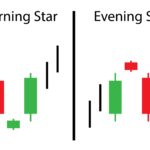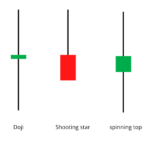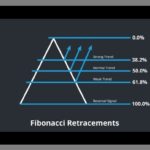Volume plays a very important role in technical analysis as it helps us to confirm trends and patterns. To know what market traders are thinking about the market, it is important to keep an eye on the volumes.
Volumes indicate how many shares have been bought and sold in a given time period. The more active a stock, the higher its volume. For example, you decide to buy 100 shares of Amara Raja Battery at 485, and I decide to sell 100 shares of Amara Raja Battery at 485. Here there is a match of price and volume, which results in a trade. Together you and I have created a volume of 100 shares. Many people take the volume count as 200 (100 buy + 100 sell), which is not the correct way to look at volume. The following hypothetical example will help you understand how the volume increases in a given day:
| No. | Time | Buying Quantity | Sell Quantity | Price | Volume | Increasing Volume |
|---|---|---|---|---|---|---|
| 1 | 9:30 AM | 400 | 400 | 62.2 | 400 | 400 |
| 2 | 10.30 AM | 500 | 500 | 62.75 | 500 | 900 |
| 3 | 11:30 AM | 350 | 350 | 63.1 | 350 | 1,250 |
| 4 | 12:30 PM | 150 | 150 | 63.5 | 150 | 1,400 |
| 5 | 1:30 PM | 625 | 625 | 63.75 | 625 | 2,025 |
| 6 | 2:30 PM | 475 | 475 | 64.2 | 475 | 2,500 |
| 7 | 3:30 PM | 800 | 800 | 64.5 | 800 | 3,300 |
At 9:30 am, 400 shares were bought and sold at a price of 62.20. An hour later, the 500 shares traded at 62.75. So at 10:30 am if you look at the total volume for the day, it will be 900 (400 + 500). Similarly, at 11:30 am, at 63.10, 350 shares were bought and sold. Now by 11:30 the volume will be 1,250 (400 + 500 + 350). It will continue like this. Here is a screenshot from the live market below showing the volumes for some stocks. This screenshot was taken on August 5, 2014, at 2:55 pm/afternoon.

You may note that, the volume of Cummins India Limited is 12,72,737 shares, similarly the volume of Naukri (Info Edge India Limited) is 85,427 shares. The volume information that you see here is the cumulative volume. Meaning, at 2:55 am, a total of 12,72,737 shares of Cummins were traded at various price points ranging from 634.90 (low) and 689.85 (high). With 35 minutes left after the market closes, an increase in volume is justified (assuming traders will continue to trade the stock for the rest of the time). In fact here is another screen shot taken at 3:30 PM same evening for the same stock.

As you can see, the volume of Cummins India Limited has increased from 12,72,737 to 13,49,736. Therefore, the volume for the day for Cummins India is 13,49,736 shares. The total volume for Naukri is 86,712 i.e. the volume of Naukri share has increased from 85,427 to 86,712. It is important for you to note that the volumes shown here are the sum total of the day’s volume i.e. the number obtained by adding the volume of each trade.
The Volume trend table
The volume information by itself is of no special use. For example, we know that the volume on Cummins India is 13,49,736 shares. So just how useful is this information separately? It really wouldn’t make any sense. However when you look at today’s volume information – along with past price and volume trends, then the volume information becomes a lot more useful.
You’ll find a summary of how to use volume information in the table below:
| No. | Price | Volume | Future Action |
|---|---|---|---|
| 1 | Increased | Increased | Bullish |
| 2 | Decreased | Decreased | No Trade zone |
| 3 | Decreased | Increased | Bearish |
| 4 | Decreased | Decreased | No Trade zone |
The first row in the table above says when volume increases along with price increases, the expectation is bullish.
Before we go through the table above, think about it – we are talking about ‘increase in volume’. What does this actually mean? What is the reference here? Are you talking about last day’s volume here or last week’s total? Where should the growth take place?
Traders usually compare the volume average of the last 10 days with today’s volume. Volume is usually defined as:
High Volume = Today’s Volume > Last 10 Days Average Volume
Low Volume = Today’s Volume < Last 10 Days Average Volume
Average Volume = Today’s Volume = Last 10 Days Average Volume
To know the average volume for the last 10 days, all you need to do is draw a moving average line on the volume bar. We will discuss moving averages in the next chapter.

In the chart above, you can see that the volumes are shown in blue bar form (bottom of the chart). The red line drawn on the volume bar represents the 10-day average. As you can see, all volume bars above and above the 10-day average can be considered high volume days. There has been some institutional activity or large participation on these days.
With that in mind, let us now look at the Price – Volume table.
The Thinking Behind the Volume Trend Chart (Table)
When institutional investors buy or sell, they are clearly not short deals. For example, think about LIC of India, they are one of the largest domestic institutional investors in India. If they buy Cummins India shares, would you think they will buy 500 shares? Obviously, they’ll probably buy 500,000 shares or even more. Now, if they were to buy 500,000 shares from the open market, it would start showing up in volume. In addition, because they are buying a larger share of the shares, the share price also goes up. Institutional money is commonly referred to as “smart money”. It is believed that smart money always invest wisely in the market as compared to small traders. So it is a wise act to follow Smart Money.
If both price and volume are rising, it means only one thing – a big player is showing interest in the stock. In such a situation, one should buy the stock as there is a belief that smart money always makes smart investments.
Or say, whenever you decide to buy, make sure the volumes are adequate. It means you are buying with smart money.
The same thing was said in the first row of the volume trend table above – when both price and volume increase, then there is an expectation of a bullish trend.
But what do you think when the price goes up and the volume goes down as indicated in the second line?
Think about it based on the following points:
Why is the price increasing?
Because shopping is happening in the market.
Are any institutional buyers responsible for the price move?
less likely.
How do you know that there are no specific buying by institutional investors?
Simple, if they were buying the volume would have increased, not decreased.
So what does it mean for decreasing volume and the accompanying increase in price?
This means that the price is moving up due to a small retail participation, not a large institutional buy. So you need to be cautious as it can be a bull trap and you can get trapped.
Moving on, the third row of the table above says, a decrease in price with an increase in volume – raising hopes of a bearish one. Why do you think so? A decrease in the price indicates that the market traders are selling the stock. An increase in volume indicates the presence of smart money. Both events occurring simultaneously (decrease in price + increase in volume) should mean that Smart Money is selling the stock. Since smart money always makes smart options, one should look for selling opportunities in the stock.
Or put another way, whenever you decide to sell, make sure the volumes are good. That means you are also selling with Smart Money.
Going forward, what do you think are the signs in the fourth line, where, both volume and price come down? Pay attention to the following points:
Why is the price decreasing?
Because market participants are selling.
Are there any institutional sellers associated with the price reduction?
less likely.
How do you know if there are no sell orders from institutional investors?
Simple, if they were selling the volume would increase and not decrease.
So what do you anticipate from the drop in price and volume?
This means that the price is going down due to selling by small traders, and institutional investors (read as smart money) are not selling. So you need to be careful as it can be a bare trap.
Revisit the Checklist
Let us revisit the checklist and understand it in terms of volume. Imagine this hypothetical technical position in a stock:
Formation of a Bullish Engulfing Pattern – This suggests a long trade due to the reasons discussed earlier.
Support near Bullish Engulfing Low – Support indicates demand in a stock. Hence the formation of a bullish engulfing pattern near the support suggests that there is indeed strong demand for the stock and hence traders may look to buy the stock.
A well-known candlestick pattern and support near the stoploss, combined provide double confirmation for the trader to go long.
Now with support near the low, imagine high volume on the second day of the bullish engulfing pattern i.e. P2 (blue candle). What can you infer from this? The conjecture is fairly clear – the high volumes coupled with price increases confirm to us that large participants are getting ready to buy.
So three signals i.e. candlesticks, S&R, and volume together suggest a single action i.e. long. So here one thing is being confirmed in three ways.
What I want to emphasize here is that volumes are very powerful as it helps the trader to confirm. Therefore it is an important thing and therefore should be included in the checklist.
Adding to this the new checklist now looks like this:
A familiar candlestick pattern should be forming in the stock.
S&R should confirm the trade. Stoploss should also be around S&R.
For a long trade, the pattern should be around the low support.
For a short trade, the pattern should be around the high resistance.
Volume should confirm the trade.
The volume should be higher than the average on the day of buy and the day of sell.
Low volume is not encouraging and hence avoid trading where volume is low.
Highlights from this chapter
- Volume is used to confirm a trend.
- Buying 100 shares and selling 100 shares makes the total volume 100, not 200.
- The volume at the end of the day shows the total combined volume for each trade throughout the day.
- High volume suggests the presence of smart money.
- Low volume indicates retail participation.
- When you initiate a long or short trade always make sure that the volume confirms it.
- Avoid trading on low-volume days.

Gaurav Heera is a leading stock market educator, offering the best stock market courses in Delhi. With expertise in trading, options, and technical analysis, he provides practical, hands-on training to help students master the markets. His real-world strategies and sessions make him the top choice for aspiring traders and investors.





